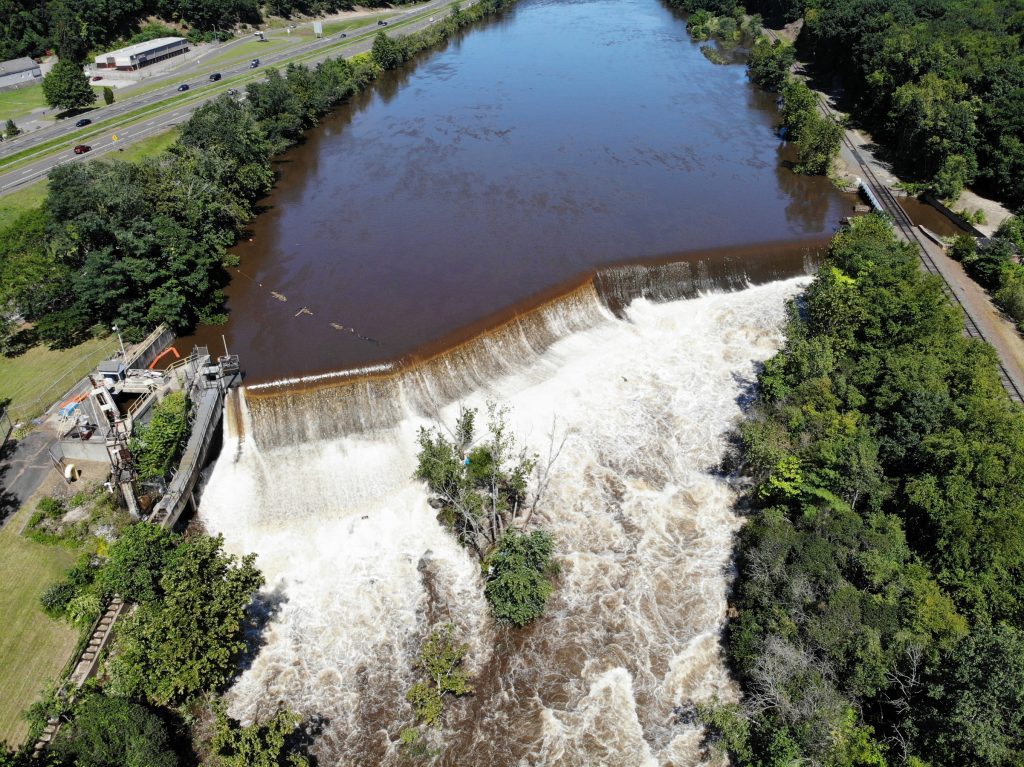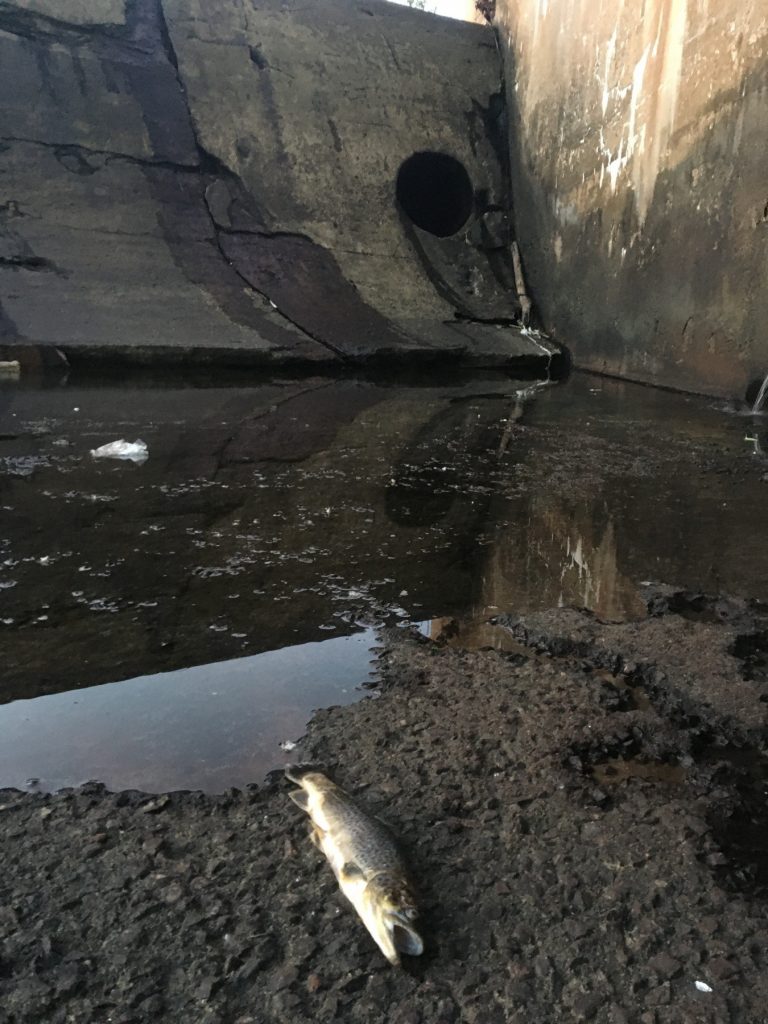
Location: Seymour, Connecticut | Status: Active
Summary: The Kinneytown Dam, now owned by Hydroland Corporation, is the last remaining barrier to migratory fish on the Naugatuck River, blocking access to over 32 river miles of spawning habitat. Currently, fish are unable to pass the dam due to over two decades of noncompliance with the hydropower facility’s licensing exemption conditions.
The fish ladder is ineffective and blocks almost 100% of fish passage. This is due in part to the poor maintenance and upkeep of the dam facilities and the current and past owners have neglected to implement any engineering or operational approaches to address these shortcomings.
To remedy the situation, we initiated a proceeding and submitted extensive comments to the Federal Energy Regulatory Commission (FERC), the CT Department of Energy and Environmental Protection and the U.S. Fish and Wildlife Services to either force the dam operators to comply with regulatory obligations to restore fish passage or stop operating the dam. we have generated significant momentum through Federal Energy Regulatory Commission proceedings (FERC) towards restoring fish passage at As a result of our advocacy, the dam owners have agreed to transfer ownership of the dam to the Naugatuck Valley Council of Governements (NVCOG) for the purpose of removing the dam and restore the river and the historic fish passage.
In partnership with Save the Sound, NVCOG applied for and received funding through the NOAA Restoring Fish Passage Through Barrier Removal grant program in 2022 for the acquisition and decommissioning of the facility, and for the design and construction work leading to the dam’s removal. The project is supported by municipal leaders, state and federal regulatory agencies, the CT federal delegation, environmental advocates, and the current dam owner.
Current Status: Save the Sound’s Ecological Restoration team and NVCOG applied for and received federal funds to remove the dam.
Next Step: Save the Sound’s ecological restoration team, with our partners, will proceed to physically remove the dam and restore historic fish runs to the Naugatuck River.

Further Reading:
Action Opportunities:
Last Updated: November 24, 2023
